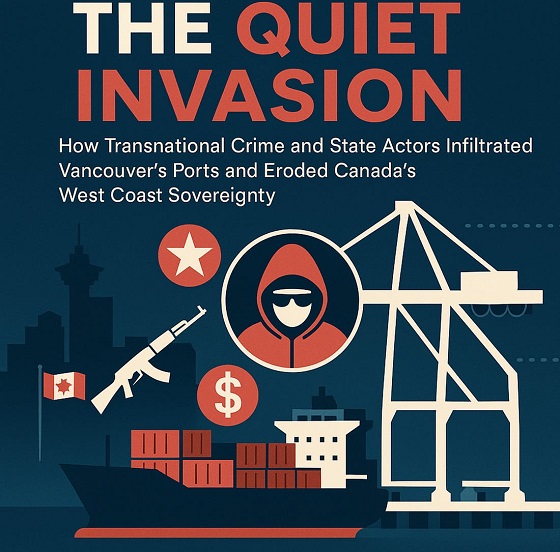Gerry Feehan
Big Bend Bob: Gerry Feehan takes us on a stunning tour of the Rio Grande River
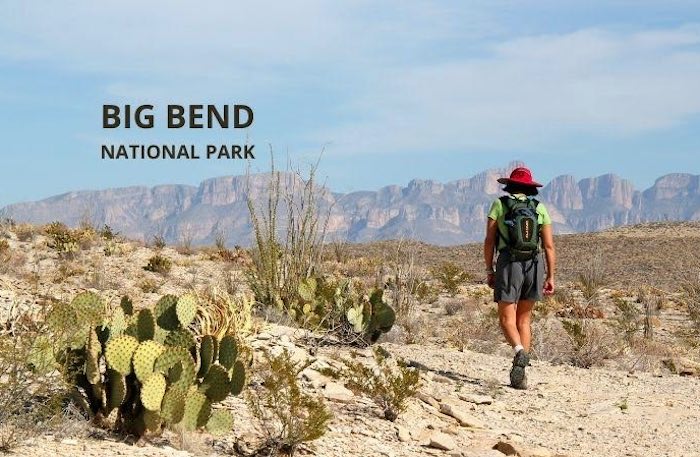

The Rio Grande River wends through Big Bend National Park
When I first spied Bob he was hunched over a computer in the dark outside a bathhouse on the Rio Grande River. We were camped in Big Bend National Park, Texas. I nodded hello as I passed. Bob looked up, grunting inaudibly. What an ornery old geezer, I thought.
Later that evening I watched as he folded up his laptop, grabbed his canes and teetered tentatively across the parking lot toward his van. I felt bad. He was entitled to his grumpiness. He could barely walk from the john to his beat-up old RV.
As I fell into slumber thoughts of Bob evaporated. We had a big day ahead: a long hike through parched desert on a rim trail overlooking the Rio Grande. Our destination was an idyllic hot spring seven kilometers upstream; a place where soothing thermal waters spill into this river famous for separating America from Mexico. After a dip and picnic lunch we’d retrace our steps through the dry wilderness. It’d be dark by the time we got back to camp.
 G
G
We started good and early – which for me means somewhere around 10:15 a.m. I thought it wise to carve a few kilometers off the long, sunny march so my wife Florence and I rode our bicycles from the campground to the trailhead. As we pedaled, I was surprised to see Bob wandering down the road, wobbling on his two walking sticks. I waved. He didn’t look up.
We secured the bikes at the trailhead, donned our packs… and promptly headed in the wrong direction. When we finally gained our bearings and started up the proper trail, there was Bob gamely climbing the first steep ascent. As we overtook him I thought it polite to slow and make a final offer of greeting; after all we were headed into the same scorched Chihuahuan desert and there wasn’t another soul around.
“Are you going to the hot springs?” I asked as we passed, masking a patronizing tone; no way was this old guy tackling the hot desert terrain alone all the way to the springs.
“Yup,” he said, opening up.
We marched on but when we stopped briefly to admire a viewpoint where the Rio Grande cuts a scenic narrow gorge between Texas and Mexico up walked Bob, peered over the ledge and said, “Pretty, isn’t it?”

Big Bend Bob surveys the Rio Grande
After that the conversational floodgates opened. We introduced ourselves and spent the next four hours bantering back and forth in clever repartee, philosophizing about life and just shooting the breeze.
Bob is a retired professor of law from Oregon. When his wife passed away a few years ago he bought an old RV and hit the road, solo. Bob proclaims a healthy disdain for authority and a hearty dislike for close-mindedness and fundamentalism of any stripe.
Bob didn’t move very quickly over the rough landscape. Now and then we’d lose sight of him on the rocky trail but eventually he’d mosey up to where we’d stopped to admire a new vantage of the Rio Grande.
“Look, those are spiny soft-shells,” he remarked at one particularly beautiful spot, pointing to a group of turtles spinning slowly in a foaming eddy far below. Above, in a scraggly tree, a vermillion flycatcher regarded us with disinterest.

Vermillion Flycatcher
“Have you two spent much time in those fancy RV resorts?” asked Bob, in a swift change of subject.
“Some,“ I reluctantly admitted, thinking wistfully of hot showers and free wifi. “Why do you ask?”
“I prefer the State and National Park campgrounds. Life is simpler and the company decidedly more enjoyable. In the posh private places there’s always a big mouth in the hot tub. Have you ever noticed that those who talk the most have the least to say?”
For the next few kilometers I spoke only when spoken to.
My concern over Bob’s solitary walk-about into the thirsty desert was ill-founded. Although advanced in years he continues to exercise a life-long passion for long distance running. He ran marathons for many moons before deciding a 42-kilometer run was too short: he moved on to extreme long-distance events.
“But those days are behind me now,” he said. “Mostly I stick to short jaunts like this.”
I smiled knowingly. My feet were killing me.

He continued. “I know it’s not much but once a year on my birthday I still have a decent jog: my age plus the miles run add up to 100.
“How far did you go this year?” I asked, thinking he must be well into his seventies.
“It’s getting shorter all the time,” he laughed. “My birthday was last week. I’m down to 15 miles. A few more years and I won’t even have to get out of bed.”
He hopped off a small outcrop, balanced on his canes and grimaced slightly, “Damn, my knee hurts!”
Eventually we arrived at the hot springs, pulled off our shoes and soaked our toes in the same healing waters enjoyed by pioneers and cattle rustlers alike for over two hundred years. Ancient petroglyphs on the nearby cliffs evidence the appealing – and supposedly healing – powers of these waters.

Ancient Petroglyphs
(At the risk of imprisonment in or banishment from the United States) I decided to flout Homeland Security and waded across the shallow waters of the Rio Grande to set foot in old Mexico. The mud on the south side of the river felt just like American mud.

Gerry on the wrong side of the river
We watched as a horseman a hundred meters downstream did what caballeros have done for centuries: gracefully (but now illegally) ride his mount across the brown waters and up the steep bank into Mexico.
Our long day with Bob was sprinkled with solitude and quiet chuckles. The old adage “don’t judge a book by its cover” comes to mind. So does the lesson of the tortoise and the hare. On the return trip he insisted we march on ahead. “Don’t wait for me. I’ll be fine.”
I thought, “Bob’s a big boy… were it not for our chance meeting, he’d be out here in the desert alone.” Off we trundled, arriving back at our bicycles just as the sun set. Although I wasn’t his keeper, I couldn’t help but keep an eye on Bob’s camper as the light waned. After darkness had fully descended and he hadn’t returned, I hopped on my bike and rode back toward the trailhead. I found Bob wandering happily down the road – canes bumping in the darkness – still
a couple of kilometers from the campground.
“You weren’t waiting on me, I hope?” he asked. “I should have been back before now but I got to talking with a couple of interesting folks back up the trail.”
“No, no, I just felt like going for a spin.” I felt stupid, like a worried parent waiting up for a teenager, embarrassed when the youngster inevitably arrives home safely.
We left Big Bend very early the next morning – around ten. As we pulled out of the campground Bob was outside the canteen pecking away at his keyboard, walking canes crisscrossed against his legs. I waved but he didn’t look up.
Gerry Feehan is an award-winning travel writer and photographer. He lives in Kimberley, BC.

Thanks to Kennedy Wealth Management for sponsoring this series. Click on the ads and learn more about this long-term local business.
Gerry Feehan
Abu Simbel
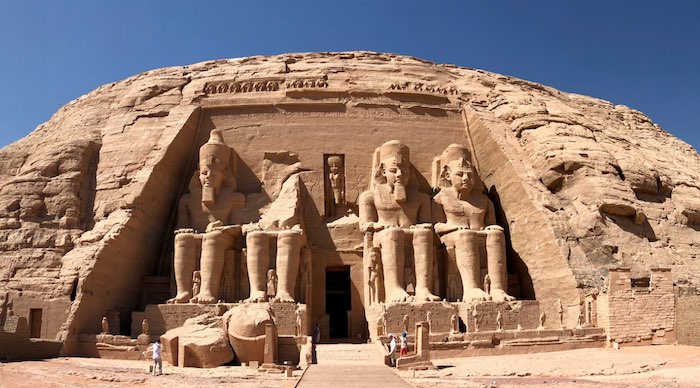
Abu Simbel is a marvel of ancient and modern engineering
I love looking out the window of an airplane at the earth far below, seeing where coast meets water or observing the eroded remains of some ancient formation in the changing light. Alas, the grimy desert sand hadn’t been cleaned from the windows of our EgyptAir jet, so we couldn’t see a thing as we flew over Lake Nasser en route to Abu Simbel. I was hopeful that this lack of attention to detail would not extend to other minor maintenance items, such as ensuring the cabin was pressurized or the fuel tank full.
We had just spent a week on a dahabiya sailboat cruising the Nile River, and after disembarking at Aswan, were headed further south to see one of Egypt’s great
monuments. There are a couple of ways to get to Abu Simbel from Aswan. You can ride a bus for 4 hours through the scorched Sahara Desert, or you can take a plane for the short 45-minute flight.
Opaque windows notwithstanding, I was glad we had chosen travel by air. Abu Simbel is spectacular, but there’s really not much to see except the monument itself and a small adjacent museum. So most tourists, us included, make the return trip in a day. And fortunately we had Sayed Mansour, an Egyptologist, on board. Sayed was there to explain all and clear our pained expressions.
Although it was early November, the intense Nubian sun was almost directly overhead, so Sayed led us to a quiet, shady spot where he began our introduction to
Egyptian history. Abu Simbel is a marvel of engineering — both modern and ancient. The temples were constructed during the reign of Ramses II. Carved from solid rock in a sandstone cliff overlooking the mighty river, these massive twin temples stood sentinel at a menacing bend in the Nile — and served as an intimidating obstacle to would-be invaders — for over 3000 years. But eventually Abu Simbel fell into disuse and succumbed to the inevitable, unrelenting Sahara. The site was nearly swallowed by sand when it was “rediscovered” by European adventurers in the early 19 th century. After years of excavation and restoration, the monuments resumed their original glory.
Then, in the 1960’s, Egyptian president Abdel Nasser decided to construct a new “High Dam” at Aswan. Doing so would create the largest man-made lake in the
world, 5250 sq km of backed-up Nile River. This ambitious project would bring economic benefit to parched Egypt, control the unpredictable annual Nile flood and also supply hydroelectric power to a poor, under-developed country. With the dam, the lights would go on in most Egyptian villages for the first time. But there were also a couple of drawbacks, which were conveniently swept under the water carpet by the government. The new reservoir would displace the local Nubian population whose forbearers had farmed the fertile banks of the Nile River for millennia. And many of Egypt’s greatest monuments and tombs would be forever submerged beneath the deep new basin — Abu Simbel included. But the government proceeded with the dam, monuments be damned.
Only after the water began to rise did an international team of archaeologists, scientists — and an army of labourers — begin the process of preserving these
colossal wonders. In an urgent race against the rising tide, the temples of Abu Simbel were surgically sliced into gigantic pieces, transported up the bank to safety and reassembled. The process was remarkable, a feat of engineering genius. And today the twin edifices, honouring Ramses and his wife Nefertari remain, gigantic, imperious and intact. But instead of overlooking a daunting corner of the Nile, this UNESCO World Heritage site now stands guard over a vast shimmering lake.
Sayed led us into the courtyard from our shady refuge and pointed to the four giant Colossi that decorate the exterior façade of the main temple. These statues of
Ramses were sculpted directly from Nile bedrock and sat stonily observing the river for 33 centuries. It was brutally hot under the direct sun. I was grateful for the new hat I had just acquired from a gullible street merchant. Poor fellow didn’t know what hit him. He started out demanding $40, but after a prolonged and brilliant negotiating session, I closed the deal for a trifling $36. It was difficult to hold back a grin as I sauntered away sporting my new fedora — although the thing did fall apart a couple of days later.
Sayed walked us toward the sacred heart of the shrine and lowered his voice. Like all Egyptians, Sayed’s native tongue is Arabic. But, oddly, his otherwise perfect English betrayed a slight cockney accent. (Sayed later disclosed that he had spent a couple of years working in an East London parts factory.) He showed us how the great hypostyle hall of the temple’s interior is supported by eight enormous pillars honouring Osiris, god of the underworld.

Exploring the inner temple

Nefertari
Sayed then left us to our devices. There were no other tourists. We had this incredible place to ourselves. In the dim light, we scampered amongst the sculptures
and sarcophagi, wandering, hiding and giggling as we explored the interior and its side chambers. At the far end lay the “the holiest of holies” a room whose walls were adorned with ornate carvings honouring the great Pharaoh’s victories — and offering tribute to the gods that made Ramses’ triumphs possible.
Exterior photographs of Abu Simbel are permitted, but pictures from within the sanctuary are verboten — a rule strictly enforced by the vigilant temple guardians — unless you offer a little baksheesh… in which case you can snap away to your heart’s content. Palms suitably greased, the caretakers are happy to pose with you in front of a hidden hieroglyph or a forbidden frieze, notwithstanding the stern glare of Ramses looking down from above.

A little baksheesh is key to holding the key
After our brief few hours at Abu Simbel, we hopped back on the plane. The panes weren’t any clearer but, acknowledging that there really wasn’t much to see in the Sahara — and that dirty airplane windows are not really a bona fide safety concern — I took time on the short flight to relax and bone up on Ramses the Great, whose mummified body awaited us at the Egyptian Museum in Cairo.
Exodus Travel skilfully handled every detail of our Egypt adventure: www.exodustravels.com/
Gerry Feehan is an award-winning travel writer and photographer. He lives in Kimberley, BC.

Thanks to Kennedy Wealth Management for sponsoring this series. Click on the ads and learn more about this long-term local business.
Gerry Feehan
Cairo – Al-Qahirah
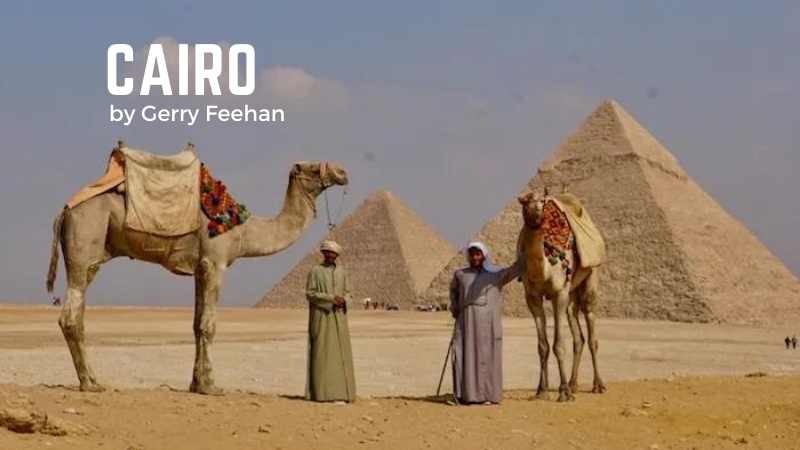
The Pyramids of Giza
The first thing one notices upon arrival in Egypt is the intense level of security. I was screened once, scanned twice and patted down thrice between the time we landed at the airport and when we finally stepped out into the muggy Cairo evening. At our hotel the scrutiny continued with one last investigation of our luggage in the lobby. Although Egyptian security is abundant in quantity, the quality is questionable. The airport x-ray fellow, examining the egg shaker in my ukulele case, sternly demanded, “This, this, open this.” When I innocently shook the little plastic thing to demonstrate its impermeability he recoiled in horror, but then observed it with fascination and called over his supervisor. Thus began an animated, impromptu percussion session. As for the ukulele, it was confiscated at hotel check-in and imprisoned in the coat check for the duration of our Cairo stay. The reasons proffered for the seizure of this innocuous little instrument ranged from “safety purposes” to “forbidden entertainment”. When, after a very long day, we finally collapsed exhausted into bed, I was shaken — but did not stir.
Al-Qahirah has 20 million inhabitants, all squeezed into a thin green strip along the Nile River. Fading infrastructure and an exponential growth in vehicles have contributed to its well-deserved reputation as one of the world’s most traffic-congested cities. The 20km trip from our hotel in the city center, to the Great Pyramid of Cheops at Giza across the river, took nearly two hours. The driver smiled, “Very good, not rush hour.”
Our entrance fee for the Giza site was prepaid but we elected to fork out the extra Egyptian pounds to gain access to the interior of the Great Pyramid. Despite the up-charge — and the narrow, dark, claustrophobic climb – the reward, standing in Cheop’s eternal resting place, a crypt hidden deep inside the pyramid, was well worth it. We also chose to stay after sunset, dine al fresco in the warm Egyptian evening, and watch the celebrated ‘sound and light’ performance. The show was good. The food was marginal. Our waiter’s name was Fahid. Like many devout Muslim men, he sported a zabiba, or prayer bump, a callus developed on the forehead from years of prostration. Unfortunately throughout the event Fahid hovered over us, attentive to the point of irritation, blocking our view of the spectacle while constantly snapping fingers at his nervous underlings. The ‘son et lumière’ show was a little corny, but it’s pretty cool to see a trio of 4500-year-old pyramids – and the adjoining Great Sphinx — illuminated by 21 st century technology.

The Great Sphinx

Giza at nightThe next night our group of six Canucks attended an Egyptian cooking class. Our ebullient hostess was Anhar, (‘the River’ in Arabic). Encouraged by her contagious enthusiasm, we whipped up a nice tabouli salad, spicy chicken orzo soup and eggplant moussaka. We finished up with homemade baklava. Throughout the evening, Anhar quizzed us about the ingredients, the herbs and spices, their origins and proper method of preparation. Anyone who answered correctly was rewarded with her approving nod and a polite clap. Soon a contest ensued. Incorrect answers resulted in a loud communal ‘bzzzt’ — like the sound ending a hockey game. It’s not polite to blow one’s own horn, but the Feehan contingent acquitted themselves quite nicely. If I still had her email, Anhar could confirm this.
Cairo was not the highlight of our three-week Egyptian holiday, but a visit to the capital is mandatory. First there’s the incredible Pyramids. But as well there’s the Egyptian Museum that houses the world’s largest collection of Pharaonic antiquities including the golden finery of King Tutankhamen and the mummified remains of Ramses the Great. Ramses’ hair is rust coloured and thinning a little, but overall he looks pretty good for a guy entering his 34 th century.

Ramses the Great

Then there’s Khan el-Khalili, the old souk or Islamic bazaar. We strolled its ancient streets and narrow meandering alleyways, continually set upon by indefatigable street hawkers. “La shukraan, no thanks,” we repeated ineffectually a thousand times. The souk’s cafes were jammed. A soccer match was on. The ‘beautiful game’ is huge in Egypt. Men and women sat, eyes glued to the screen, sipping tea and inhaling hubbly bubbly.

The Old Souk Bazaar

Selfies, Souk style
An aside. When traveling in Egypt, be sure to carry some loose change for the hammam (el baño for those of you who’ve been to Mexico). At every hotel, restaurant, museum and temple — even at the humblest rural commode — an attendant vigilantly guards the lavatory. And have small bills for the requisite baksheesh. You’re not getting change.
After our evening in the souk we had an early call. Our guide Sayed Mansour met us at 6am in the hotel lobby. “Yella, yella. Hurry, let’s go,” he said. “Ana mish bahasir – I’m not joking.” “Afwan,” we said. “No problem,” and jumped into the van. As we pulled away from the curb Sayed began the day’s tutorial, reciting a poem by Percy Blythe Shelly:
I met a traveller from an antique land,
Who said—“Two vast and trunkless legs of stone
Stand in the desert. . . . My name is Ozymandias, King of Kings;
Look on my Works, ye Mighty, and despair!”
And we were off, through the desert, to Alexandria. Founded by Alexander the Great in 332 BC, Egypt’s ancient capital was built on the Nile delta, where the world’s longest river meets the Mediterranean Sea. The day was a bit of a bust. The city was once renowned for its magnificent library and the famed Lighthouse of Alexandria. But the former burnt down shortly after Christ was born and the latter — one of the original seven wonders of the ancient world – toppled into the sea a thousand years ago. Absent some interesting architecture, a nice view of the sea from the Citadel — and Sayed’s entertaining commentary — Alexandria wasn’t really worth the long day trip. Besides, we needed to get back to Cairo and pack our swimwear. Sharm el Sheikh and the warm waters of the Red Sea were next up on the Egyptian agenda.

Gerry with some Egyptian admirers
Exodus Travel skilfully handled every detail of our trip: www.exodustravels.com And, if you’re thinking of visiting Egypt, I can suggest a nice itinerary. No sense reinventing the pyramid: [email protected]
Gerry Feehan is an award-winning travel writer and photographer. He lives in Kimberley, BC.

Thanks to Kennedy Wealth Management for sponsoring this series. Click on the ads and learn more about this long-term local business.
-

 Automotive1 day ago
Automotive1 day agoElectric vehicle sales are falling hard in BC, and it is time to recognize reality.
-

 Automotive1 day ago
Automotive1 day agoPower Struggle: Electric vehicles and reality
-

 Alberta5 hours ago
Alberta5 hours agoAlberta Independence Seekers Take First Step: Citizen Initiative Application Approved, Notice of Initiative Petition Issued
-
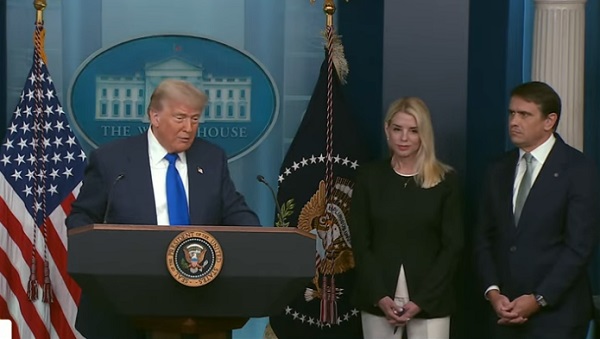
 Business1 day ago
Business1 day agoTrump on Canada tariff deadline: ‘We can do whatever we want’
-
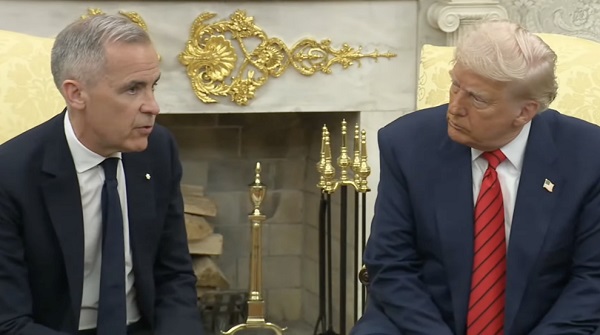
 Business7 hours ago
Business7 hours agoCanada Caves: Carney ditches digital services tax after criticism from Trump
-

 Brownstone Institute2 days ago
Brownstone Institute2 days agoFDA Exposed: Hundreds of Drugs Approved without Proof They Work
-
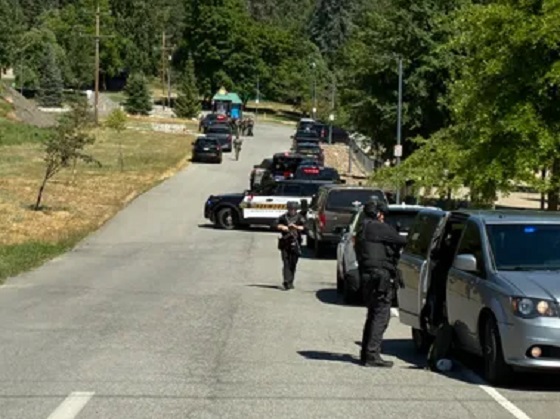
 Crime7 hours ago
Crime7 hours agoSuspected ambush leaves two firefighters dead in Idaho
-
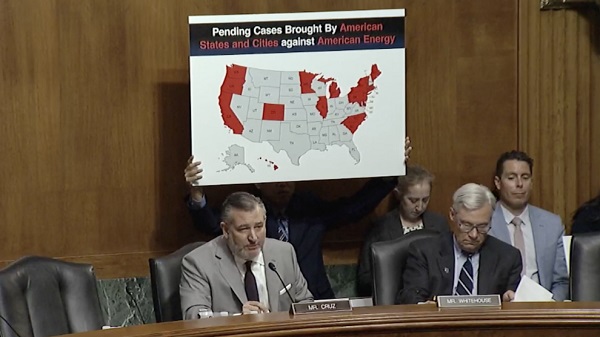
 Energy1 day ago
Energy1 day agoChina undermining American energy independence, report says

